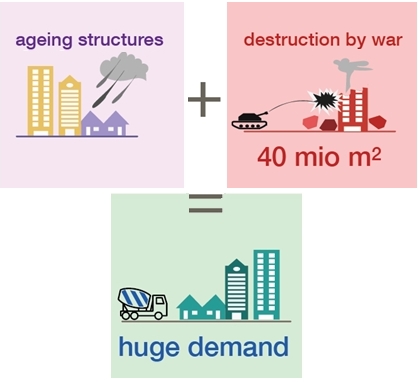Challenges in material recycling for postwar reconstruction
DOI:
https://doi.org/10.21809/rilemtechlett.2022.171Keywords:
Concrete, Recycling, Aggregates, Porosity, AdsorptionAbstract
Besides the fact that concrete recycling allows to avoid landfills disposal and contributes to a closed-cycle economy, such option may be very much in demand in war struck regions such as Ukraine, which after the end of the war, are faced with the problem of rebuilding and reconstructing. Beyond this emergency, even in peacetime extensive parts of the building stock will sooner or later need to be replaced and concrete recycling is called to play an increasing role there.
However, depending on the technology and degree to which aggregates are recycled, concrete may be characterized by poor workability, reduced mechanical properties, increased shrinkage and reduced durability. This deterioration in the properties of recycled concrete is usually attributed to the characteristics of the old cement mortar remaining on the surface of the recycled aggregates, which is best considered as an additional volume of hardened cement paste with fine aggregate and additional porosity. This article attempts to underline how such key concepts help frame the current state of knowledge about concrete recycling, understand the implications of existing regulations, in order to define pragmatic and efficient routes for broadening the use of concrete recycling in war struck regions, with specific examples regarding Ukraine.

Downloads
Published
How to Cite
Issue
Section
License
Copyright (c) 2022 Viacheslav Troian, Volodymyr Gots, Emmanuel Keita , Nicolas Roussel, Ueli Angst, Robert J. Flatt

This work is licensed under a Creative Commons Attribution 4.0 International License.
Authors retain copyright of the articles published in RILEM Technical Letters and grant the journal the right of first publication with open access. The work is simultaneously licensed under Creative Commons Attribution 4.0 International License (CC BY 4.0) that allows others to share and adapt the work under the following terms: 1) a proper attribution is given in a form of a reference to the original work's authorship and initial publication in RILEM Technical Letters (bibliographic record with the DOI link); 2) a link to the license is provided; 3) the changes (if any) are indicated.









